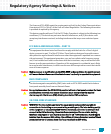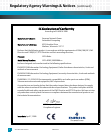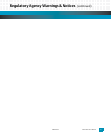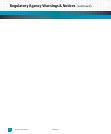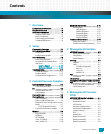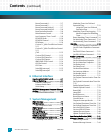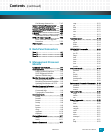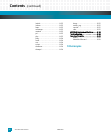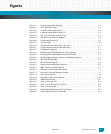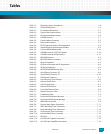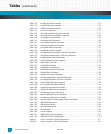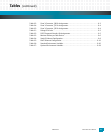
10009109-01 ATCA-9305 User’s Manual
i
Regulatory Agency Warnings & Notices
The Emerson ATCA-9305 meets the requirements set forth by the Federal Communications
Commission (FCC) in Title 47 of the Code of Federal Regulations. The following information
is provided as required by this agency.
This device complies with part 15 of the FCC Rules. Operation is subject to the following two
conditions: (1) This device may not cause harmful interference, and (2) this device must
accept any interference received, including interference that may cause undesired opera-
tion.
FCC RULES AND REGULATIONS — PART 15
This equipment has been tested and found to comply with the limits for a Class A digital
device, pursuant to part 15 of the FCC Rules. These limits are designed to provide reason-
able protection against harmful interference when the equipment is operated in a commer-
cial environment. This equipment generates, uses and can radiate radio frequency energy
and, if not installed and used in accordance with the instructions, may cause harmful inter-
ference to radio communications. Operation of this equipment in a residential area is likely
to cause harmful interference, in which case the user will be required to correct the interfer-
ence at his own expense.
Caution: Making changes or modifications to the ATCA-9305 hardware without the explicit consent
of Emerson Network Power could invalidate the user’s authority to operate this equipment.
EMC COMPLIANCE
The electromagnetic compatibility (EMC) tests used an ATCA-9305 model that includes a
front panel assembly from Emerson Network Power.
Caution: For applications where the ATCA-9305 is provided without a front panel, or where the front
panel has been removed, your system chassis/enclosure must provide the required
electromagnetic interference (EMI) shielding to maintain EMC compliance.
GR-1089-CORE STANDARD
Caution: WARNING: The intra-building port(s) of the equipment or subassembly is suitable for
connection to intrabuilding or unexposed wiring or cabling only. The intra-building port(s)
of the equipment or subassembly MUST NOT be metallically connected to interfaces that
connect to the OSP or its wiring. These interfaces are designed for use as intra-building
interfaces only (Type 2 or Type 4 ports as described in GR-1089-CORE, Issue 4) and require
isolation from the exposed OSP cabling. The addition of Primary Protectors is not sufficient
protection in order to connect these interfaces metallically to OSP wiring.
!
!
!





